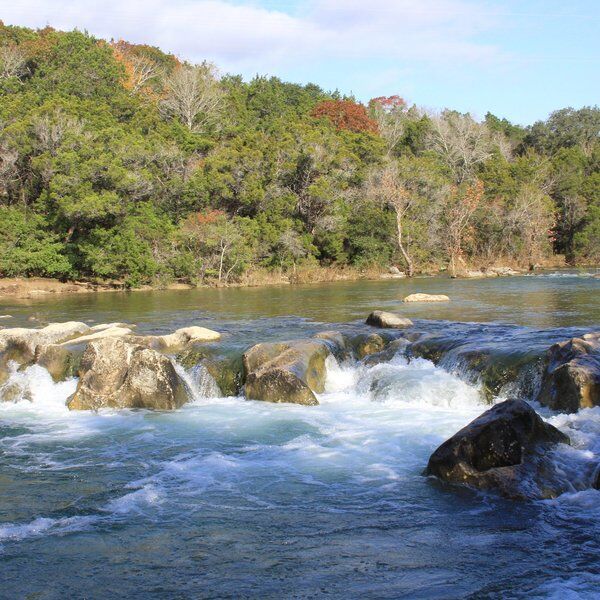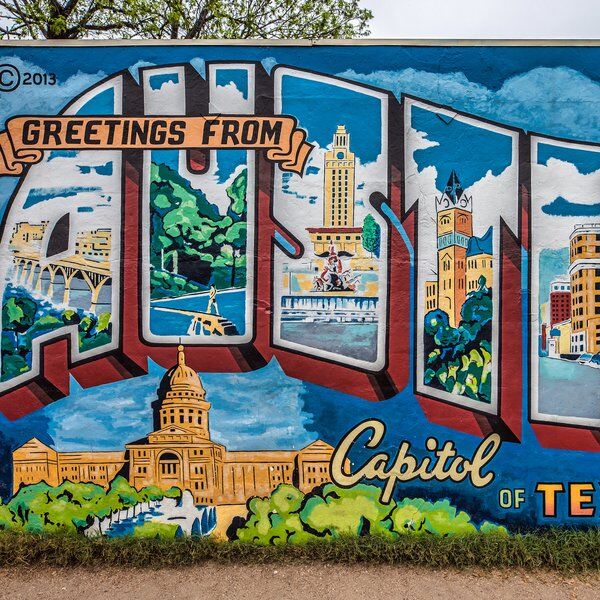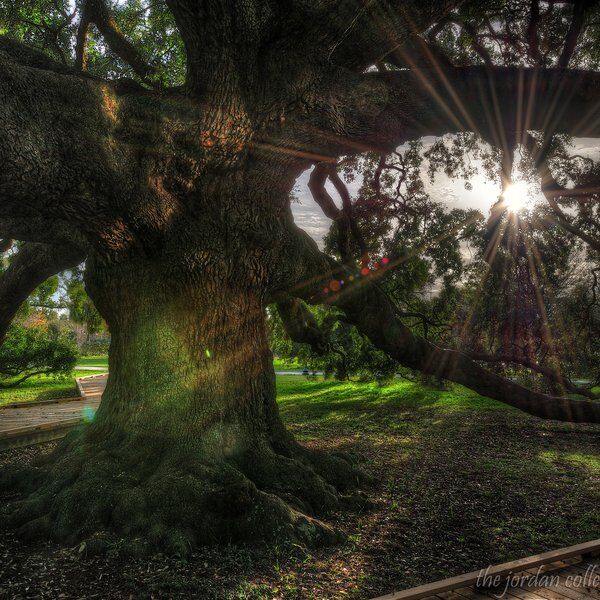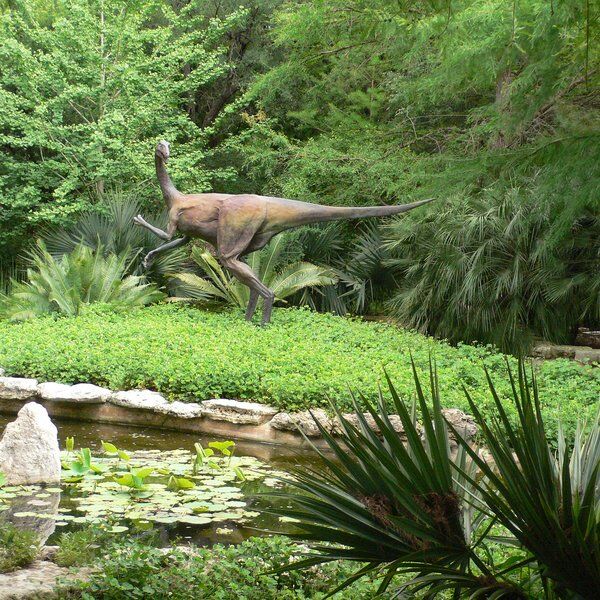Discover Pease District Park
Along the banks of Shoal Creek in central Austin, Pease District Park, with its limestone bluffs and shaded trails, offers locals and visitors a scenic retreat with deep historical significance. Spanning 84 acres from West 15th to West 31st Street, the park provides a green space for relaxation, recreation, and a connection to Austin’s rich past.
While other parks like Zilker Metropolitan Park may draw bigger crowds, Pease Park has cemented itself as an essential part of the community, hosting concerts, picnics, and even an annual Eeyore's Birthday Party that still attracts crowds today.

History of Pease District Park
Origins and the Pease Family
Pease District Park takes its name from Governor Elisha M. Pease, who, along with his wife, Lucadia, donated 23 acres of land in 1875 to the city of Austin, making it one of the first public parks in Texas.
The land donated for the park was part of the Pease family's larger estate, Woodlawn Plantation. Lucadia Pease loved taking carriage rides along the banks of Shoal Creek, describing it as the “prettiest part” of their property.
Inspired by the development of public parks like New York’s Central Park, the Peases wanted to leave a lasting gift for Austin residents.
Development of the Park
Despite the Pease family’s generous donation, improvements to the park were slow. For several decades, the land remained largely undeveloped, even becoming a dumping ground at times.
It wasn’t until the 1920s that serious efforts were made to beautify Pease District Park, thanks in large part to the Austin Kiwanis Club. In 1926, the club raised funds to add restrooms, memorial gates, a wading pool, and picnic areas.
The Civilian Conservation Corps (CCC), part of President Franklin D. Roosevelt’s New Deal, also contributed by building picnic tables, stone walls, and bridges throughout the park in the 1930s.
By the 1950s, the park became more accessible to residents with the construction of a hike-and-bike trail, linking it to Austin’s growing network of outdoor spaces.
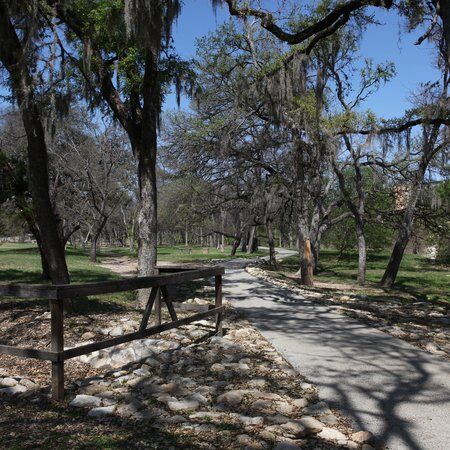
Pease District Park: The Land of Ancient Peoples
Pease District Park isn’t just a place for recreation—it’s also a site with ancient ties to Central Texas’ indigenous peoples. Archaeological evidence suggests that Native Americans lived in the area as far back as 11,400 years ago, drawn by the region’s fertile land and abundant wildlife.
In the mid-1800s, as settlers began to encroach on Native American territories, conflicts over land and resources increased. Tribes like the Lipan Apache, Tonkawa, and Comanche suffered significant losses due to disease and battles with settlers.
Today, Pease District Park acknowledges this history by honoring the Native American nations who once called the area home, encouraging park-goers to reflect on their resilience and strength.
Shoal Creek
Shoal Creek, which winds its way through Pease Park, played a crucial role in shaping Austin’s early development. In 1839, city planner Edwin Waller used Shoal Creek as the western boundary of Austin, originally known as Waterloo.
The creek’s shallow waters and natural springs made it a valuable resource for Native Americans and early European settlers, and today, it remains a key feature of the park’s landscape.
The Six Sections of Pease District Park
Pease District Park is divided into six distinct sections—Kingsbury Commons, Polecat Hollow, Live Oak Meadow, Wooten Woods, Gaston Green, and Lamar Terrace.
Let's explore the park's key features and attractions:
Kingsbury Commons
Pease Park’s most significant transformation in recent history came with the Kingsbury Commons project, a $15 million upgrade completed in 2021.
This project revitalized the southern portion of the park, adding state-of-the-art amenities and making it one of the park's most visited areas today.
Pease Park Treehouse
Among the highlights is the Pease Park Treehouse, a 575-square-foot circular structure designed by Ten Eyck Landscape Architects, Mell Lawrence, and Clare van Montfrans.
Elevated among the trees, the treehouse allows visitors to experience the park from a completely different perspective—relaxing in suspended nets. The treehouse is ADA-accessible, making it a welcoming space for all park-goers.
The structure is open to the elements, blending seamlessly with its natural surroundings. The hope is that as the tree canopy grows over the years, the treehouse will become even more integrated into the park’s environment.
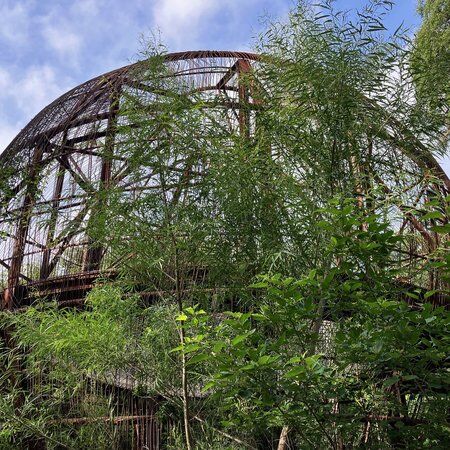
Sporting Activities and Splash Pads
In addition to the treehouse, Kingsbury Commons features a splash pad, ideal for cooling off during Austin's hot summers, and a variety of natural playscapes for children.
Sports enthusiasts will appreciate the basketball court and bocce ball court, while the nearby baseball diamond offers space for more traditional activities.
If you're in need of a snack or refreshment, the concession area nearby offers local treats from Brother Friend and SnoRide.
Tudor Cottage: A Historic Landmark
The Kingsbury Commons area also contains a modern event space, perfect for receptions and gatherings, which is actually a repurposed 1920s Tudor-style cottage.
Built in the 1920s, the cottage was one of Austin's earliest park facilities, originally used as a storage facility. Today, it has been restored and repurposed as a gathering space for events.
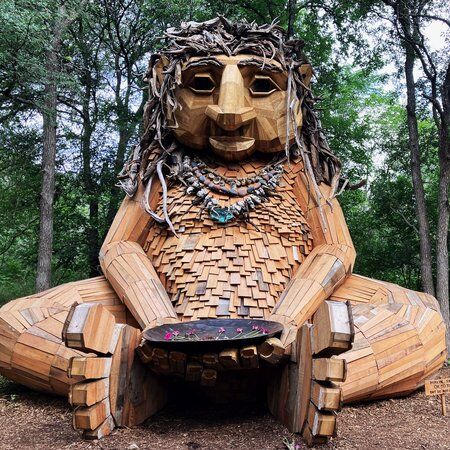
Thomas Dambo's Troll: Malin’s Fountain
Keep an eye out for the exciting new (as of 2024) installation—Malin’s Fountain. This is a giant troll sculpture created by Danish artist Thomas Dambo.
The troll can be found just north of Kingsbury Commons and represents the importance of water conservation. The sculpture, which depicts a troll holding a bowl, serves as a reminder to share resources with the animals inhabiting the park.
Visitors can take the Troll Trek to visit Malin, situated alongside Shoal Creek.
Polecat Hollow
Just north of Kingsbury Commons is Polecat Hollow, which is known for its sand volleyball courts.
These courts, located along Lamar Boulevard, are free for public use and are a popular spot among locals looking to engage in some friendly competition. The area’s convenient location and easy accessibility make it a great place to drop in for a quick game.
Live Oak Meadow
For those seeking a quieter experience, Live Oak Meadow is a really peaceful section of Pease District Park.
This expansive meadow, shaded by large oak trees, is ideal for relaxing picnics or simply enjoying a good book.
The space is a favorite for those looking to enjoy a bit of solitude within the bustling park. If conditions permit, visitors can cross Shoal Creek on stepping stones for a bit of added adventure.

Wooten Woods: Dog-Friendly Trails
One of the park’s unique features is its off-leash area for dogs, which begins in Wooten Woods. This section provides a tree-lined, shaded trail where dogs can roam freely.
The off-leash zone stretches from 24th Street to 29th Street, giving pet owners plenty of space to walk, run, or relax with their furry friends.
24th Street Bridge
Crossing Shoal Creek at the south end of the park is the 24th Street Bridge, a historic structure built in 1928.
The bridge, which was expanded in 1939 as part of a Works Progress Administration (WPA) project, is known for its ornate concrete design.
Although once slated for demolition, the bridge was saved by community advocates and now enjoys protected status as a historic landmark.
Lamar Terrace
The northernmost section, Lamar Terrace, is a nature-filled space where visitors can explore a wildflower meadow and take in the stunning limestone canyon walls, reminiscent of the Texas Hill Country.
Mystic Raven
One of the most iconic pieces of public art in Pease Park is David Deming’s Mystic Raven. Originally displayed in downtown Austin, this large-scale sculpture now resides in Lamar Terrace.
The piece, created in 1983, explores themes of unity and transformation, using bold, geometric forms of a man, bird, and machine, to evoke the feeling of being overwhelmed by nature.

Things to Do at Pease District Park
Pease District Park offers a wide range of activities for visitors of all ages, from festivals and picnics to fitness events and nature exploration.
A few signature events held in the park include the famous Eeyore's Birthday Party, the annual Pride Picnic, and the Fall Fitness Festival.
Eeyore's Birthday Party
One of Austin’s most iconic and quirky traditions, Eeyore’s Birthday Party has been celebrated at Pease Park since the 1970s.
Named after the melancholic donkey from A.A. Milne's Winnie-the-Pooh, this event fills the park with music, costumes, drum circles, and games.
Held on the last Saturday of April, the party draws thousands of visitors, bringing a vibrant community spirit to the park.
Pride Picnic
The Pride Picnic is a newer event, held in late June, celebrating Austin's LGBTQ+ community.
This day-long event includes local vendor markets, drag shows, live music, and interactive activities such as friendship bracelet-making and plant swaps.
The event has something for everyone, including food trucks and art installations.
Fall Fitness Festival
Every October, Pease Park hosts the Fall Fitness Festival, a family-friendly event that promotes health and wellness.
With yoga sessions, high-intensity interval training (HIIT), core-strengthening exercises, and fitness activities for children, this event is perfect for active families.
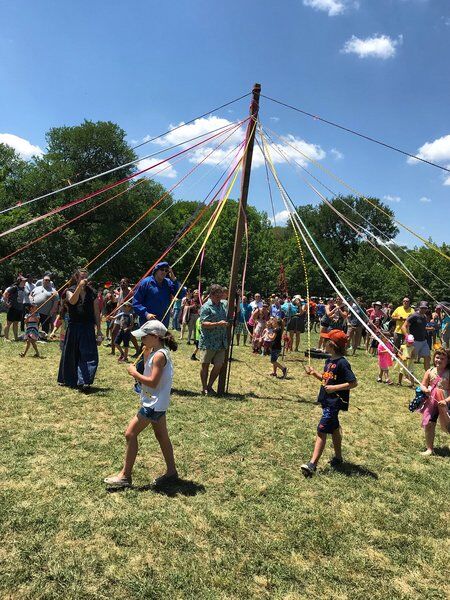
Other Events and Activities at Pease Park
Aside from the marquee events like Eeyore’s Birthday Party and the Pride Picnic, Pease Park hosts smaller, community-focused events throughout the year.
Visitors can check the park’s event calendar for weekly yoga events, volunteer days, and performances, such as Summer Storytime at the Amphitheater or puppet shows for kids. There’s even a Squirrel Fest.
Enjoy the Wildlife
The Peasecology initiative aims to protect the park’s natural habitats and educate the public about the importance of biodiversity in urban spaces.
Visitors can spot a wide variety of plants and animals, including wildflowers, shrubs, trees, birds, and reptiles, as well as occasional sightings of local mammals.
By preserving green spaces like Pease Park, the city of Austin ensures that future generations can continue to enjoy the park's rich wildlife.

Visiting Pease District Park
Pease District Park is open daily from 6:00 am to 10:00 pm, with splash pad season running from May to October. The splash pad is open from 8:00 a.m. to 9:00 pm during the season, making it a perfect spot for families to cool off during Austin’s hot summer days.
While biking and walking are highly encouraged, weekend parking is available at several locations, including the Austin Community College Rio Grande parking garage, which offers 400 free parking spaces. Additional parking can be found near the park’s Live Oak Meadow and Gaston Green areas.
The park is committed to being an accessible and safe space for all visitors. Pease Park Conservancy collaborates with local authorities and city departments to maintain a safe environment, and visitors are encouraged to report any concerns.
Explore Beyond Pease District Park with CityDays
After spending time enjoying the wonders of Pease District Park, why not continue your Austin adventure with CityDays?
We offer a range of scavenger hunts and treasure hunt tours across the city, designed to bring people together for a fun, interactive way to explore Downtown Austin and learn more about the Revolution, during which Elisha M. Pease was the Governor of Austin!
CityDays is not limited to Austin either! We provide adventure experiences across cities worldwide, allowing participants to uncover hidden gems, solve puzzles, and connect with both the past and present of each location.








